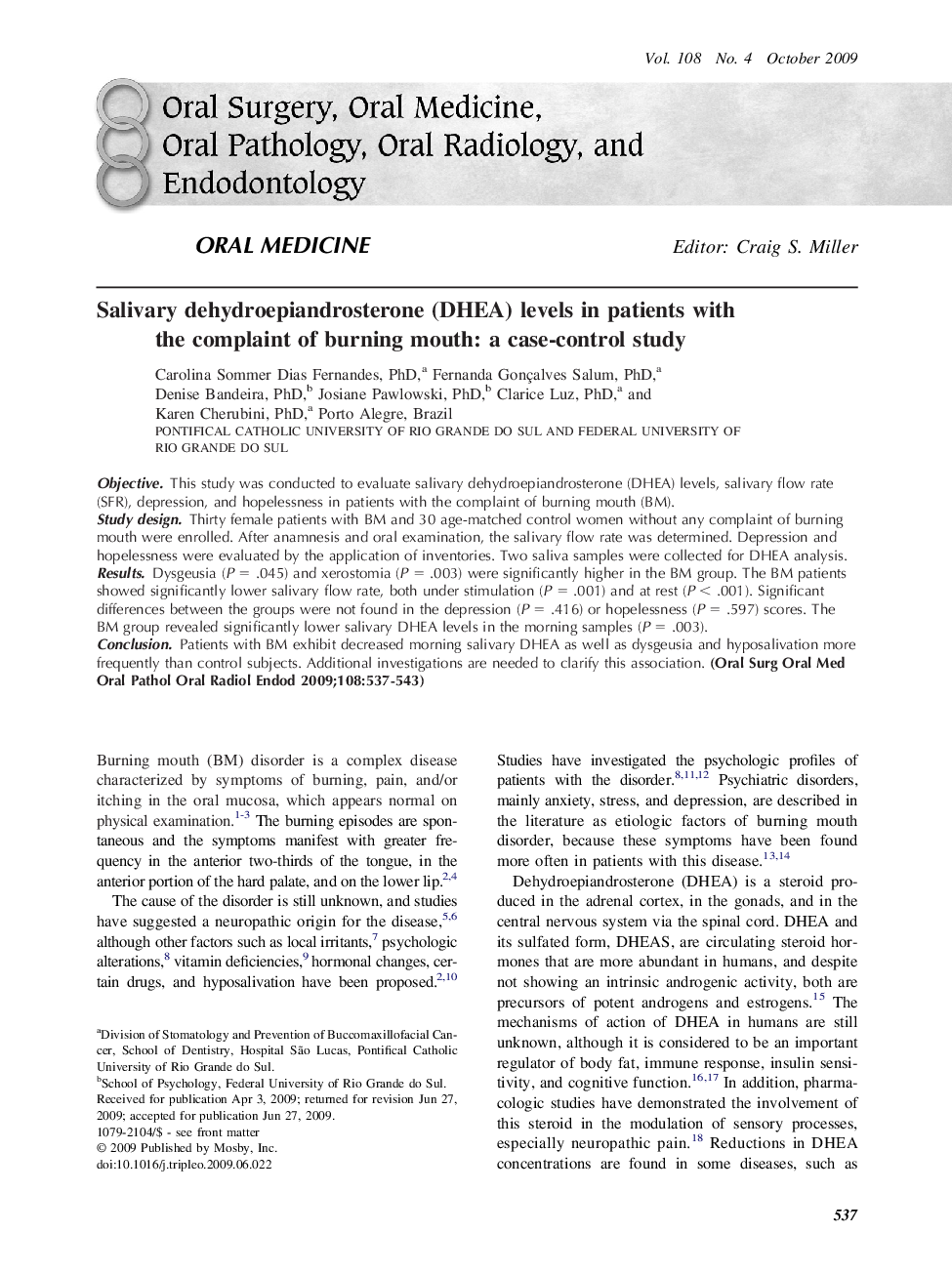| Article ID | Journal | Published Year | Pages | File Type |
|---|---|---|---|---|
| 3167918 | Oral Surgery, Oral Medicine, Oral Pathology, Oral Radiology, and Endodontology | 2009 | 7 Pages |
ObjectiveThis study was conducted to evaluate salivary dehydroepiandrosterone (DHEA) levels, salivary flow rate (SFR), depression, and hopelessness in patients with the complaint of burning mouth (BM).Study designThirty female patients with BM and 30 age-matched control women without any complaint of burning mouth were enrolled. After anamnesis and oral examination, the salivary flow rate was determined. Depression and hopelessness were evaluated by the application of inventories. Two saliva samples were collected for DHEA analysis.ResultsDysgeusia (P = .045) and xerostomia (P = .003) were significantly higher in the BM group. The BM patients showed significantly lower salivary flow rate, both under stimulation (P = .001) and at rest (P < .001). Significant differences between the groups were not found in the depression (P = .416) or hopelessness (P = .597) scores. The BM group revealed significantly lower salivary DHEA levels in the morning samples (P = .003).ConclusionPatients with BM exhibit decreased morning salivary DHEA as well as dysgeusia and hyposalivation more frequently than control subjects. Additional investigations are needed to clarify this association.
